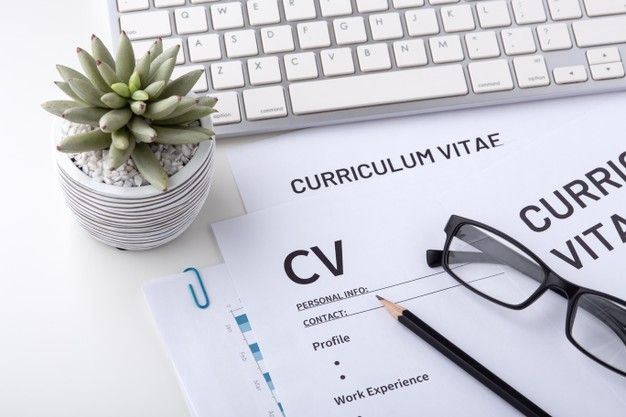How to Follow Up After a Job Interview the Right Way
A job interview doesn’t end when you leave the room or close the video call. In fact, one of the most overlooked steps in the hiring process is what happens after the interview the follow-up. Sending a thoughtful and well-timed follow-up message can reinforce your interest, remind the interviewer of your strengths, and even give you a competitive edge over other candidates. In today’s highly competitive job market, where employers interview dozens of people for one role, a professional follow-up can set you apart and demonstrate that you truly care about the opportunity.

1. Timing Is Everything: When to Follow Up
The best time to send your first follow-up email is within 24 to 48 hours of your interview. This is the ideal window to express appreciation while keeping your conversation fresh in the interviewer’s mind. A short thank-you note shows that you are polite, professional, and genuinely interested. For example:
“Thank you for taking the time to meet with me yesterday about the marketing coordinator role. I really enjoyed learning more about your company’s creative projects and would be thrilled to contribute my skills to your team.”
This simple gesture can make you memorable in a positive way.
2. Crafting a Professional Message
Your follow-up email should be short, sincere, and to the point. Begin by thanking the interviewer for their time, briefly mention a key topic from your discussion, and restate your enthusiasm for the position. Avoid long paragraphs or unnecessary details — employers are busy, so a concise and well-written email will be more effective. Always include a polite closing, such as “Best regards,” or “Sincerely,” followed by your full name and contact information.
3. Personalization Makes the Difference
Avoid sending generic, copy-paste messages. Recruiters can easily tell when you’re using the same email for every job. Instead, personalize your message by referencing something specific you discussed — a company project, a goal, or a challenge you could help solve. This demonstrates that you were attentive and truly engaged during the interview. For instance, you could write, “I was especially excited to learn about your company’s expansion into new markets and would love to contribute my skills in digital outreach to support that growth.”
4. Write a Clear and Impactful Subject Line
Your subject line should make your email easy to recognize. Avoid vague lines like “Checking in.” Instead, use something more specific and polite, such as:
- “Thank You for the Interview [Your Name]”
- “Great Speaking with You about [Job Title]”
- “Follow-Up Regarding [Position Name] Interview”
This makes your message professional and prevents it from getting lost in a busy inbox.
5. What to Do If You Haven’t Heard Back
If you haven’t received a response within 7–10 days, it’s appropriate to send a gentle reminder. Keep it short and polite:
“I hope you’re doing well. I wanted to follow up regarding my interview for the [Position Title] on [Date]. I’m still very interested in the role and would appreciate any update you could share about the hiring process.”
This shows persistence without being pushy. Employers appreciate candidates who stay engaged but respect their time.
6. Don’t Overdo It
It’s important to strike the right balance.
you seem impatient or desperate. One thank-you message and one status follow-up are enough. If you still don’t hear back, move on gracefully and keep applying to other roles. Remember, sometimes a rejection has nothing to do with your performance — it might simply be internal timing, budget changes, or another candidate being a slightly better fit.
7. Maintain a Positive and Professional Tone

Your tone matters as much as your words. Even if you’re anxious for an answer, keep your follow-up warm, respectful, and optimistic. Avoid sounding frustrated or demanding. For example, don’t write “I haven’t heard back from you yet” instead say “I wanted to check in and see if there have been any updates.” Professional communication builds a good impression, even if this particular job doesn’t work out.
8. Use LinkedIn for a Soft Follow-Up
If you haven’t connected with your interviewer on LinkedIn, consider doing so a few days after the interview. You can send a short note like, “Thank you for the opportunity to interview with your team. I enjoyed learning more about your company and hope to stay connected.”
You can also engage with their company’s posts liking or commenting on relevant content helps you stay visible in a natural, non-intrusive way. It keeps you on their radar without constantly emailing them.
9. Proofread Before Sending
Before hitting “send,” review your email carefully. Check for typos, grammar mistakes, and clarity. A poorly written email can undo all your efforts. Remember, your communication after the interview reflects your professionalism. Reading your email out loud before sending can help you catch awkward phrasing or errors you might overlook on screen.
10. Following Up After Multiple Interviews
If you’ve gone through more than one round of interviews, it’s perfectly fine to follow up after each stage. After a second or third round, your message can be slightly longer, expressing appreciation for the ongoing opportunity and reiterating your interest. For instance:
“Thank you for the opportunity to meet with the team again and discuss the next steps. Each conversation has made me more excited about the possibility of joining your organization and contributing to your success.”
This reinforces your enthusiasm and reminds them why you’re a strong candidate.
11. The Role of Gratitude and Patience

Even if you don’t get the job, a professional follow-up leaves a lasting impression. Employers remember candidates who communicate respectfully and express gratitude. You might not be the right fit for one position, but they could contact you later for another opportunity. Gratitude and patience show emotional intelligence a quality many recruiters value as much as skills or experience.
Conclusion:
Following up after an interview isn’t just good manners it’s a strategic move that shows professionalism, communication skills, and genuine interest. A simple email can be the deciding factor between two equally qualified candidates. It’s your chance to remind the employer why you’re the right person for the job and to leave a positive final impression. So the next time you finish an interview, don’t just wait take action. A well-crafted follow-up could turn your interview into an offer.





